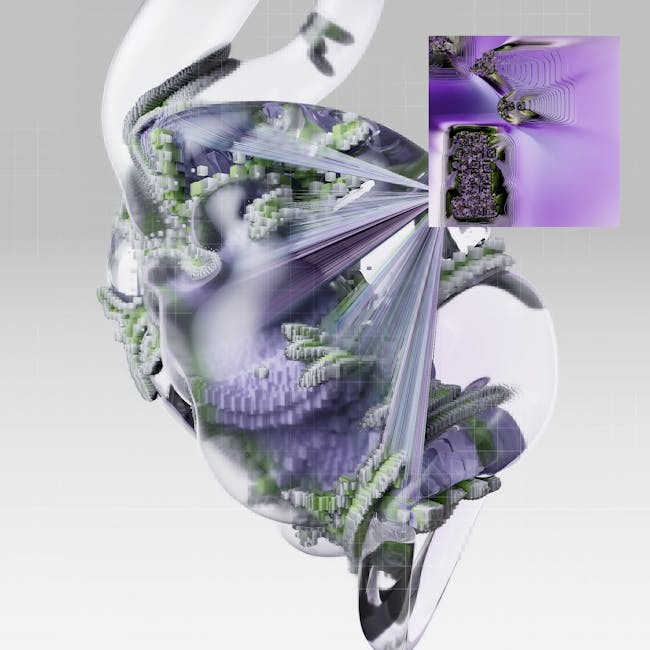This popular book by Narasimha Karumanchi simplifies data structures and algorithms with clear explanations, making it accessible. Available as a PDF, it’s perfect for learners seeking a strong foundation.
1.1 Overview of the Book
Data Structures and Algorithms Made Easy by Narasimha Karumanchi is a comprehensive guide designed for beginners and professionals alike. Published in 2011, it spans 13 chapters, covering fundamental concepts, advanced data structures, and practical applications. The book offers multiple solutions to each problem, with implementations in C/C++ and Java, making it a versatile resource. Its clear explanations and real-world case studies provide a solid foundation for understanding data structures and algorithms, while its focus on problem-solving makes it a go-to resource for technical interviews and industry applications.
1.2 Importance of Data Structures and Algorithms
Data structures and algorithms form the backbone of modern computing, enabling efficient problem-solving and optimal resource utilization. They are crucial for developing scalable, high-performance applications and tackling complex challenges in software development. Mastery of these concepts is essential for career growth in computer science, as they underpin technical interviews and real-world applications. Understanding them allows developers to write cleaner, more efficient code, making them indispensable in fields like data science, machine learning, and system design. This book serves as a gateway to mastering these foundational skills.

Key Concepts in Data Structures
This section explores foundational data structures like arrays, linked lists, stacks, and queues, providing clear explanations and practical examples to build a solid understanding of their implementation and use.
2.1 Basic Data Structures: Arrays, Linked Lists, and Stacks
This section explains the fundamentals of arrays, linked lists, and stacks, which are essential for building more complex data structures. Arrays provide fixed-size, homogeneous data storage, while linked lists offer dynamic memory allocation with nodes connected by pointers. Stacks follow the LIFO principle, enabling efficient push and pop operations. The book provides multiple solutions and code examples in C/C++ to implement these structures, ensuring a strong foundation for understanding their use in real-world applications and algorithm design.
2.2 Advanced Data Structures: Trees, Graphs, and Hash Tables
This section delves into the intricacies of trees, graphs, and hash tables, which are crucial for solving complex problems. Trees enable hierarchical data organization, while graphs model relationships between nodes. Hash tables provide efficient data storage and retrieval using keys. The book offers multiple solutions for each structure, along with code examples in C/C++ and Java, to aid in understanding their implementation and application in scenarios like database indexing, pathfinding, and real-world problem-solving.
2.3 Specialized Data Structures: Heaps, Queues, and Trees
Heaps, queues, and advanced tree structures are explored in depth, providing efficient ways to manage and manipulate data. Heaps are specialized trees used for priority queuing, while queues enable FIFO operations. Trees, including binary and AVL trees, offer structured data organization; The book provides multiple solutions for each structure, along with code examples in C/C++ and Java, to illustrate their implementation and real-world applications, such as priority scheduling, network protocols, and database indexing.

Algorithms and Their Classification
The book categorizes algorithms into sorting, searching, and graph types, offering multiple solutions and code examples in C/C++ and Java for practical understanding.
3.1 Sorting Algorithms: Bubble Sort, Selection Sort, and Merge Sort
The book provides detailed explanations of sorting algorithms like Bubble Sort, Selection Sort, and Merge Sort. Bubble Sort is simple but inefficient for large datasets. Selection Sort improves slightly by selecting the smallest element. Merge Sort excels with its divide-and-conquer strategy, offering O(n log n) time complexity. Each algorithm is explained with code examples in C/C++ and Java, making it easier to understand and implement. These explanations help learners grasp the trade-offs between simplicity and efficiency in sorting algorithms.
3.2 Searching Algorithms: Linear Search and Binary Search
The book thoroughly explains Linear Search and Binary Search, essential techniques for locating elements in data structures. Linear Search is straightforward, checking each element sequentially, but inefficient for large datasets. Binary Search is more efficient, requiring a sorted array and repeatedly dividing the search interval. Code examples in C/C++ and Java illustrate their implementation. The book highlights use cases and performance differences, helping readers understand when to apply each algorithm for optimal results in various scenarios.
3.3 Graph Algorithms: BFS, DFS, and Dijkstra’s Algorithm
The book provides in-depth coverage of BFS, DFS, and Dijkstra’s Algorithm. BFS is ideal for finding shortest paths in unweighted graphs, while DFS excels at graph traversal and cycle detection. Dijkstra’s Algorithm efficiently finds the shortest path in weighted graphs. Code examples in C/C++ and Java illustrate implementations, and real-world applications highlight their practical uses. The book’s clear explanations and multiple solutions make these algorithms accessible for learners, ensuring a strong understanding of graph-based problem-solving techniques and their applications in various scenarios.

Analysis of Algorithms
The book explains asymptotic notation, time complexity, and space complexity in detail. It covers best, average, and worst-case scenarios, emphasizing trade-offs between time and space efficiency.
4.1 Asymptotic Notation: Big-O, Big-Ω, and Big-Θ
The book provides a clear explanation of asymptotic notation, which is essential for understanding algorithm efficiency. Big-O notation measures the worst-case time complexity, while Big-Ω measures the best-case scenario. Big-Θ represents the tight bound, indicating both upper and lower limits. These notations help in analyzing how algorithms perform as input sizes grow. The book uses practical examples to illustrate these concepts, making it easier for learners to grasp the theoretical foundations of algorithm analysis and design.
4.2 Time Complexity: Best Case, Average Case, and Worst Case
The book explains time complexity by breaking it into best, average, and worst-case scenarios. Worst-case analysis, like O(n²) for bubble sort, is most common. Average-case considers typical inputs, while best-case, though rare, is also covered. Practical examples help learners understand these concepts without heavy mathematical jargon, ensuring a solid grasp of algorithm efficiency and performance metrics. This approach makes the topic accessible while maintaining technical accuracy.
4.3 Space Complexity: Memory Usage and Optimization
Space complexity refers to the memory usage of an algorithm, focusing on how much space is required as input size increases. The book emphasizes optimizing memory to improve efficiency, especially in systems with limited resources. It discusses techniques like minimizing variable usage and avoiding unnecessary data structures. Practical examples illustrate how to balance time and space complexity, ensuring algorithms are both efficient and scalable. This section provides a clear understanding of memory management, crucial for developing optimized solutions in real-world applications.
4.4 Trade-offs Between Time and Space Complexity
Optimizing algorithms often involves balancing time and space complexity. While reducing time complexity may increase memory usage, minimizing space complexity can slow down execution. The book explores these trade-offs, offering strategies to achieve efficiency. For instance, caching improves speed but consumes memory, while compression reduces space but increases processing time. By analyzing real-world scenarios, readers learn to make informed decisions based on resource constraints, ensuring algorithms are both time and space efficient for optimal performance in various applications.

Features of “Data Structures and Algorithms Made Easy”
The book offers multiple solutions for each problem, code examples in C/C++ and Java, and real-world applications, making it a comprehensive resource for beginners and professionals alike.
5.1 Why This Book is a Great Resource for Beginners
This book excels as a beginner-friendly resource due to its clear explanations and structured approach. It breaks down complex concepts into understandable parts, making it easier for new learners to grasp. With multiple solutions for each problem, it encourages a deeper understanding of various approaches. The inclusion of code examples in C/C++ and Java provides practical insights, while real-world applications help learners see the relevance of the concepts. Its availability in PDF format makes it accessible, ensuring that beginners can easily start their journey in data structures and algorithms.
5.2 Multiple Solutions for Each Problem
This book stands out by offering multiple solutions for each problem, allowing learners to explore different approaches and deepen their understanding. The inclusion of solutions in both C/C++ and Java provides practical examples that cater to various programming backgrounds. This feature is particularly beneficial for beginners, as it helps them grasp concepts through diverse methodologies. The comprehensive coverage ensures that readers can practice extensively, enhancing their problem-solving skills. The availability of these solutions in the PDF format makes it an invaluable resource for anyone aiming to master data structures and algorithms.
5.3 Code Examples in C/C++ and Java

The book provides extensive code examples in both C/C++ and Java, enabling readers to implement data structures and algorithms practically. These examples are well-structured and cover a wide range of problems, making it easier for learners to understand and apply concepts. The inclusion of multiple programming languages caters to diverse learning preferences and backgrounds. The code is concise and annotated, allowing for better comprehension. This hands-on approach helps reinforce theoretical knowledge, making the book an excellent resource for both beginners and experienced developers aiming to refine their skills. The PDF version ensures easy access to these examples.
5.4 Real-World Applications and Case Studies
The book highlights real-world applications of data structures and algorithms, providing practical insights through case studies. These examples demonstrate how concepts like sorting, searching, and graph algorithms are used in industries such as software development, data science, and machine learning. Readers gain a clearer understanding of how these tools solve real problems, making the learning process more engaging and relevant. The inclusion of case studies bridges the gap between theoretical knowledge and practical implementation, offering a hands-on learning experience that enhances problem-solving skills. This approach makes the book invaluable for both students and professionals.

Learning Resources and Supplements
The book offers study guides, chapter summaries, and online courses for additional practice. Animated visualizations of algorithms enhance understanding, providing a comprehensive learning experience for readers.
6.1 Study Guide and Chapter Summaries
The book provides a comprehensive study guide and detailed chapter summaries, enabling learners to reinforce their understanding of key concepts. Each summary highlights important sections, helping readers review efficiently. The study guide includes practice problems and solutions, allowing for hands-on application of data structures and algorithms. Available as a free PDF, these resources are designed to complement the main book, ensuring a structured and accessible learning experience for beginners and experienced programmers alike.
6.2 Online Courses and Tutorials for Additional Practice
Complementing the book, online courses and tutorials offer hands-on practice with data structures and algorithms. These resources include interactive coding exercises, video lectures, and quizzes. Platforms like Coursera and Udemy provide structured learning paths aligned with the book’s content. Animated visualizations of algorithms further enhance understanding, while expert instructors guide learners through complex topics. These additional resources ensure a well-rounded learning experience, helping readers apply theoretical knowledge to real-world problems effectively.
6.3 Animated Visualizations of Algorithms
Animated visualizations of algorithms provide learners with an engaging way to understand complex concepts. These visual aids demonstrate step-by-step executions of sorting, searching, and graph algorithms, making abstract ideas more tangible. For instance, animations of Bubble Sort or Merge Sort illustrate how elements are compared and reordered. Similarly, visualizations of BFS and DFS help learners grasp graph traversal techniques. These animations, often available online, complement the book’s explanations, enhancing retention and practical understanding of data structures and algorithms. They are particularly useful for visual learners aiming to master these foundational concepts.

Impact on Career and Industry
Understanding data structures and algorithms, as taught in ‘Data Structures and Algorithms Made Easy,’ is vital for meeting industry demands and advancing in the tech career landscape.
7.1 Importance of Data Structures and Algorithms in Software Development
Data structures and algorithms form the backbone of efficient software development. They enable developers to write optimized, scalable, and maintainable code. Understanding these concepts is crucial for solving complex problems, improving performance, and reducing resource consumption. The ability to implement and analyze data structures like arrays, trees, and graphs, along with algorithms such as sorting and searching, is essential for building robust applications. This knowledge helps developers create solutions that are both time and space efficient, ensuring better user experiences and system reliability.
7.2 How the Book Prepares Readers for Technical Interviews
The book excels in preparing readers for technical interviews by offering multiple solutions to problems, enhancing problem-solving skills. It provides clear explanations of data structures and algorithms, with code examples in C/C++ and Java. Real-world case studies and practical applications help readers apply concepts effectively. The book’s focus on best practices and optimization techniques equips readers to tackle common interview questions confidently. Its comprehensive coverage ensures a solid foundation, making it an invaluable resource for technical interview preparation.
7.3 Applications in Data Science and Machine Learning
The book highlights how data structures and algorithms are fundamental to data science and machine learning. Techniques like trees and graphs are crucial for tasks such as data modeling and clustering. The book’s explanations of sorting and searching algorithms are essential for efficient data preprocessing and feature engineering. Practical implementations in the book align with real-world applications, such as predictive modeling and recommendation systems, making it a valuable resource for data science professionals and machine learning enthusiasts.

Reviews and Feedback
Readers praise the book for its clarity and practical approach, with many testimonials highlighting its effectiveness in building a strong foundation in data structures and algorithms.
8.1 Reader Ratings and Testimonials
The book has received a 4.5-star rating with over 6,000 reviews, praised for its clarity and practical approach. Readers highlight its effectiveness in building a strong foundation in data structures and algorithms, making it a must-read for both beginners and professionals. Many testimonials emphasize how the book simplifies complex concepts through multiple solutions and real-world applications, making it an indispensable resource for technical interviews and career growth in software development and data science.
8.2 Comparison with Other Popular Books on the Subject
8.3 Recommendations for Different Learning Styles
“Data Structures and Algorithms Made Easy” caters to various learning styles, offering clear explanations for visual learners and hands-on coding examples for practical learners. The book’s structured approach, with multiple solutions to problems, suits those who prefer theoretical insights. Additionally, the inclusion of real-world applications and animated visualizations makes it ideal for kinesthetic learners. For auditory learners, the book’s concise language and logical flow facilitate easy understanding. Its versatility ensures that learners of all styles can benefit, making it a comprehensive resource for mastering data structures and algorithms.

Future of Data Structures and Algorithms
The book “Data Structures and Algorithms Made Easy” remains pivotal in addressing future trends by providing adaptable solutions to complex data challenges, ensuring relevance in evolving tech landscapes.
9.1 Emerging Trends in Data Structures
Emerging trends in data structures focus on efficient management of large-scale data, with innovations like self-balancing trees and dynamic hash tables gaining prominence. The integration of data structures with machine learning algorithms is becoming crucial, enabling smarter data processing. Real-world applications, as highlighted in “Data Structures and Algorithms Made Easy,” demonstrate how these trends solve complex problems. The book’s emphasis on multiple solutions and real-world case studies prepares readers to adapt to these evolving trends, ensuring they remain competitive in the ever-changing tech landscape.
9.2 Evolution of Algorithm Design Techniques
The evolution of algorithm design techniques has led to more efficient and adaptive solutions for complex problems. Modern algorithms leverage dynamic programming, greedy approaches, and divide-and-conquer strategies to optimize performance. Advances in machine learning and big data have further driven innovation, with algorithms now being tailored for specific applications. As highlighted in “Data Structures and Algorithms Made Easy,” understanding these evolving techniques is crucial for developing scalable and efficient solutions in today’s fast-paced technological environment.
9.3 The Role of This Book in Keeping Up with Industry demands
9.3 The Role of This Book in Keeping Up with Industry Demands
“Data Structures and Algorithms Made Easy” serves as a cornerstone for professionals and students alike, offering a comprehensive understanding of fundamental concepts. Its PDF format ensures accessibility, making it easy to study on the go. By providing multiple solutions to problems and real-world applications, the book bridges the gap between theory and practice, aligning with industry demands for efficient and innovative solutions. It equips readers with the skills needed to tackle modern challenges, ensuring they remain competitive in a rapidly evolving technological landscape.